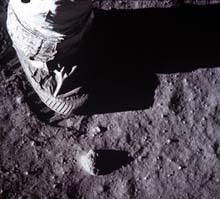HTML for Absolute Beginners, by Jon Storm.
Useful HTML tags;
HTML Do's and Don't's;
Beginner's HTML Index;
Jargon dictionary;
Ultraspace;
Jon Storm.
And finally...
 I haven't taught you everything about HTML, but you know enough now to create a pretty decent website. If you want to try something I haven't covered, hopefully you are comfortable enough reading tags to find a website that has the feature(s) you want to try, View its Source, and "liberate" the tags you need. Easy. So I'm just going to run a few ideas past you, and let you get on with it...
I haven't taught you everything about HTML, but you know enough now to create a pretty decent website. If you want to try something I haven't covered, hopefully you are comfortable enough reading tags to find a website that has the feature(s) you want to try, View its Source, and "liberate" the tags you need. Easy. So I'm just going to run a few ideas past you, and let you get on with it...
Deprecated tags, Cascading Style Sheets and the W3C
Before we get on to the fun stuff, there is something I ought to mention. What is and isn't "proper" HTML is officially decided by a rather self-important body called the World Wide Web Consortium, or "W3C" for short. It's basically a committee made up of interested parties such as web designers and browser manufacturers. Unfortunately the latter don't always implement exactly what has been agreed, or suddenly decide to add extra features into their browsers that they didn't tell the W3C about. So even though the W3C may say that something is an official part of HTML, that doesn't necessarily mean it will definitely work properly in all browsers.
For most purposes you can safely ignore the W3C, and this particularly applies to their edicts on Cascading Style Sheets (CSS) and the <FONT> tag. The only reason I'm mentioning them at all is because you may hear that they have "deprecated" the <FONT> tag, which means they don't want you to use it. They want everyone to use CSS instead, which is far more complicated. CSS is just the thing if you are a professional designer creating a megasite with hundreds of pages, but for the likes of you and me CSS is way over the top - the <FONT> tag is much less hassle. Fortunately, although the W3C would like to abolish the <FONT> tag, there is absolutely zero chance that the browser manufacturers will stop supporting it, because there are literally millions of sites that use it, and any browser that didn't display them properly just wouldn't get used. It would be commercial suicide. So if someone tells you that you "ought" to be using CSS instead of <FONT>, just ignore them. Politely.
Showing off
So let's talk about something more interesting. There are lots of things you can
do to spice up a webpage. As well as using ordinary still pictures, there are
lots of ways to add movement, sound and other special effects.
The easiest way to get some motion on a webpage is to use animated GIFs, like this skydiver. If you are feeling really adventurous (and you have a graphics package that supports it) you can make your own, but there are thousands lying around on the internet, free for you to use. Just go to a search engine and search for "animated GIF" - that's what I did. They are very easy to use, because you simply display them with the <IMG SRC> tag, just like a still picture. Do be aware that they are a lot bigger than a still image of the same dimensions, though, because an animated GIF is essentially a series of slides that display in turn, and all these pictures are included in the one file.
Another thing you can do is use Java. There are all kinds of things it can do. It can give you a guestbook, a mailform
for visitors to send you feedback, menus - all sorts of things (though some
may require special access to your ISP's server, which they may or may not allow).
Java also has a cousin, Javascript, also capable
of lots of interesting things, which puts commands into the HTML rather than
in a separate program. A visitor's browser has to have Javascript enabled for
it to work, but usually they will so it shouldn't be a problem.
There are all kinds of things it can do. It can give you a guestbook, a mailform
for visitors to send you feedback, menus - all sorts of things (though some
may require special access to your ISP's server, which they may or may not allow).
Java also has a cousin, Javascript, also capable
of lots of interesting things, which puts commands into the HTML rather than
in a separate program. A visitor's browser has to have Javascript enabled for
it to work, but usually they will so it shouldn't be a problem.
You don't need to know anything about Java or Javascript to use them, which is just as well because I don't. Just copy the HTML source code as usual. If you download Java applets they should come with at least some instructions. You will probably find that some applets don't seem to do what you expected, or even don't work at all. Fiddling with the parameters on a trial-and-error basis may cure the problem, but be prepared to throw an applet away and try another one instead if necessary. It's in the nature of freebies that they don't always work.
Another hugely impressive technology for websites is Flash, from Macromedia Technologies. It can do cartoon movies, sound, interactive games and all kinds of good stuff. Your visitor needs the Flash plugin, and although a lot of people have it, there are also a lot who don't. So if you do use Flash, make sure your site also works without it. One drawback to Flash is that it tends to be a bit bulky, so it can take a while to get started, especially if your visitor is connected to the Internet with an ordinary modem. Doesn't matter how good it is if they get bored waiting for it to download and leave before it starts.
Sound and video
If you want to put sound on a website there are several options. Much the smallest (and therefore quickest to load) are MIDI files, usually only a couple of K. A MIDI file is not a recording, it's a set of instructions to your computer to play certain musical notes on certain virtual instruments (eg piano, flute, drums etc), and so it is only useful for music. Although it has the advantage of starting very quickly, a huge drawback is that if the visitor has a cheap soundcard (and lots of people do) it will sound horrible. You can invoke a MIDI file either via an ordinary link, or as a background sound to a page by adding the BGSOUND="midifile name" attribute to your <BODY> tag - but I don't recommend the latter.
If you want more than just musical notes, you need to use a recording rather than MIDI. The trouble with using recordings on a web page is that they tend to be very big. Even a few seconds of audio is likely to be hundreds of K in size, particularly in the ubiquitous .WAV format. Again, you can invoke a .WAV file with an ordinary link (or the BGSOUND attribute of <BODY> - but don't, it will take forever to load).
The best alternative for sound is MP3. It works
by compressing sound files to a much more manageable size, at the cost of some
sound quality. MP3 is actually an offshoot off MPEG movie technology, and although
some MP3's stream, generally it is used for high quality music which you download.
I'm too lazy to write you an MP3 FAQ, so if you want to know more you'll have
to hit the search engines!
Last, and in many ways least, you can have movies.
Least because movies are enormous, and over any kind of modem dialup
they have to be tiny, grainy and very short
As with anything else, don't get too carried away with special effects. Apart
from style considerations, they tend to eat up webspace very quickly. A decent-sized
JPEG or GIF will usually be no more than about 50 K, and even a fairly large
page's HTML will almost always be under 20 K. Anyway, a well-chosen picture
will often have just as much impact as something fancy.

I hope this has given you a few ideas. Have fun with it!
Useful HTML tags; HTML
Do's and Don't's; Beginner's HTML Index; Jargon
dictionary; Ultraspace; Jon
Storm.
 There are all kinds of things it can do. It can give you a guestbook, a mailform
for visitors to send you feedback, menus - all sorts of things (though some
may require special access to your ISP's server, which they may or may not allow).
Java also has a cousin, Javascript, also capable
of lots of interesting things, which puts commands into the HTML rather than
in a separate program. A visitor's browser has to have Javascript enabled for
it to work, but usually they will so it shouldn't be a problem.
There are all kinds of things it can do. It can give you a guestbook, a mailform
for visitors to send you feedback, menus - all sorts of things (though some
may require special access to your ISP's server, which they may or may not allow).
Java also has a cousin, Javascript, also capable
of lots of interesting things, which puts commands into the HTML rather than
in a separate program. A visitor's browser has to have Javascript enabled for
it to work, but usually they will so it shouldn't be a problem.
 I haven't taught you everything about HTML, but you know enough now to create a pretty decent website. If you want to try something I haven't covered, hopefully you are comfortable enough reading tags to find a website that has the feature(s) you want to try, View its Source, and "liberate" the tags you need. Easy. So I'm just going to run a few ideas past you, and let you get on with it...
I haven't taught you everything about HTML, but you know enough now to create a pretty decent website. If you want to try something I haven't covered, hopefully you are comfortable enough reading tags to find a website that has the feature(s) you want to try, View its Source, and "liberate" the tags you need. Easy. So I'm just going to run a few ideas past you, and let you get on with it...